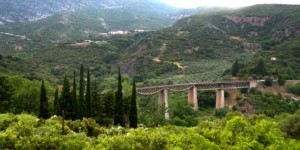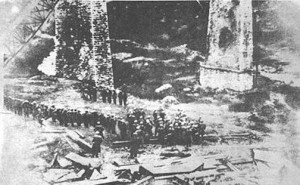The historical Gorgopotamos Bridge in central Greece stopped serving trains as of Saturday, putting an end to over a century of service.
From now on, railway passengers from Athens heading north to Thessaloniki will not pass through the scenic Gorgopotamos bridge that connects Bralos mountain with Lamia.
Now the railway passes through the tunnel of Kallidromos after Tithorea and then to Lianokladi instead of the route passing through Amfiklia, Lilaia and Bralos.
The historical moment of Gorgopotamos bridge
Probably the best known in Greece, the bridge of Gorgopotamos is engraved in the minds of Greeks and history pages as one of the most important victories of the National Resistance during the German Occupation in World War II.
The famous bridge was blown up on November 25, 1942 in the battle of Gorgopotamos. It was a joint operation of the two Greek resistance armies of ELAS and EDES cooperating with British army agents Italian and German occupying forces guarding the bridge.
The destruction of the Gorgopotamos bridge was tremendous blow to the Nazi axis as it cut off the transportation of troops and the supply line between northern and southern bridge. It was also the first – and last – time that the two opposing resistance forces of EDES and ELAS cooperated.
The inauguration of the Gorgopotamos bridge
The Gorgopotamos bridge was completed in 1905, when Charilaos Trikoupis was Prime Minister of Greece. Gorgopotamos was one of the most difficult parts to cross in the Athens-Thessaloniki route because of its rocky terrain. Its completion was a feat, even in today’s standards, as engineers have confirmed.
The new bridge was rebuilt in 1948. It is 211 meters long and 30 meters high. On a small hill a little distance away, each year on the anniversary of its destruction, a commemorative gathering of officials, surviving National Resistance representatives and Greek citizens honor the great feat of the brave fighters who dealt a blow to the Nazis.
Source: greekreporter
Ask me anything
Explore related questions






